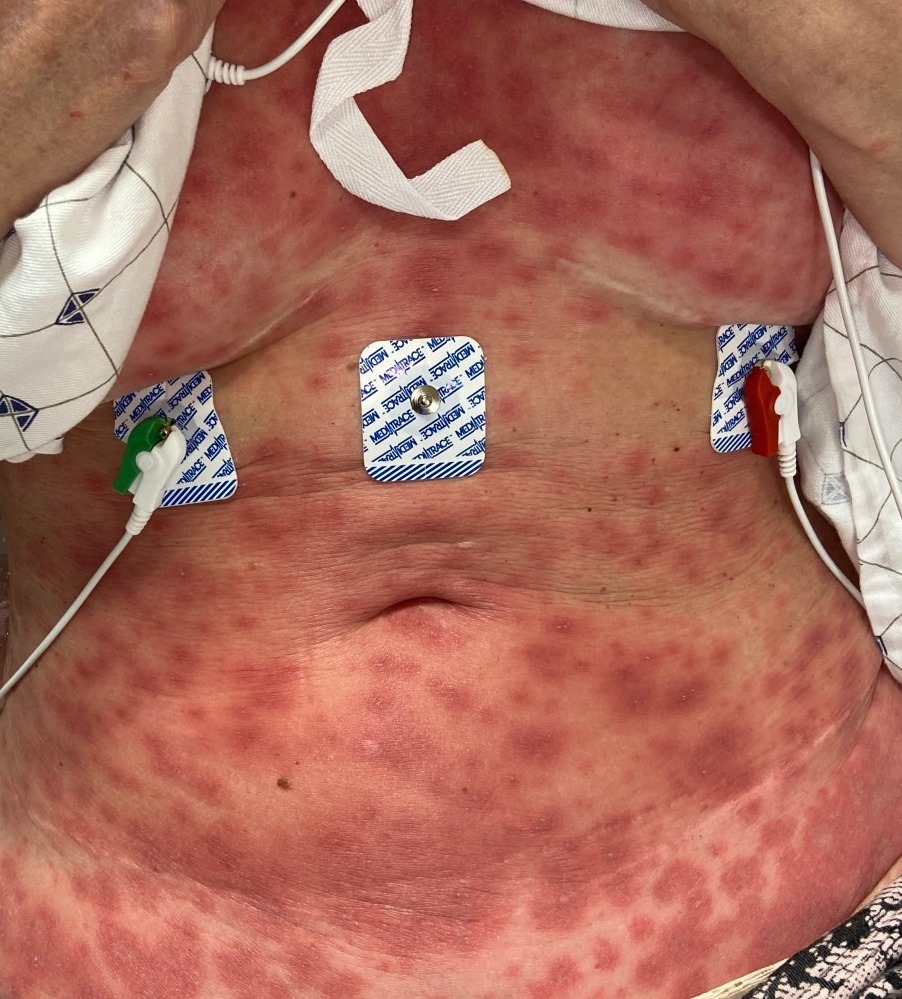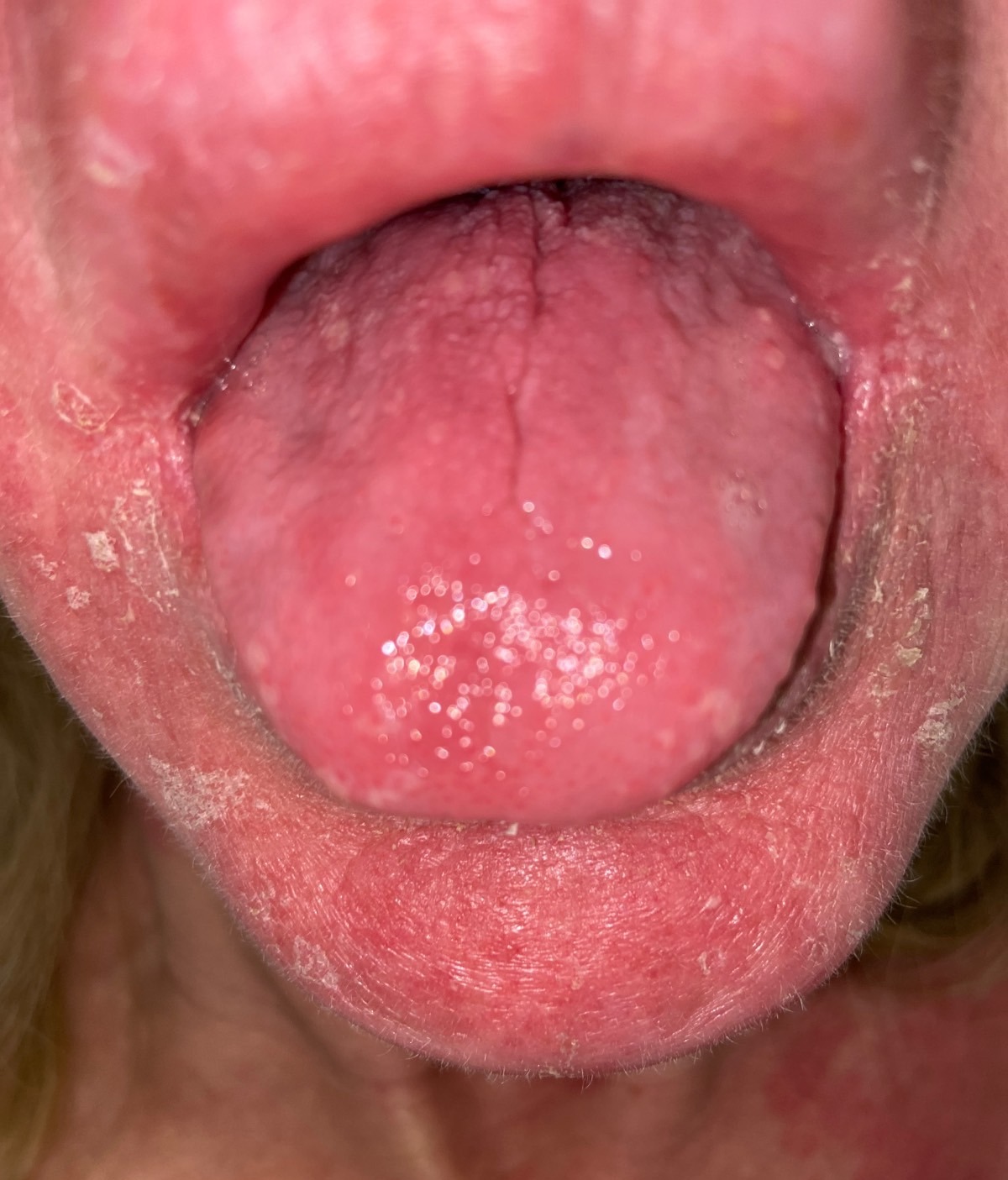Case Presentation: A 64-year-old woman with a history of ankylosing spondylitis, Crohn’s disease, asthma, and prior diagnosis of drug-induced lupus presents for a diffuse pruritic rash. Six days prior, she developed a single flat violaceous lesion limited to her left jaw and urticaria on her chest. She was started on prednisone 60 mg by her primary care physician. Despite this, the rash spread to her face, oral mucosa, trunk, extremities, and labia, and became painful. Consequently, she discontinued prednisone and presented to the hospital. On admission, the patient was afebrile and hemodynamically stable. She had erythematous, well-demarcated plaques on her face sparing the nasolabial folds, oral ulcerations, and innumerable coalescing 0.4 to 2 cm erythematous targetoid papules and plaques with central crusting on her back, chest, abdomen, proximal extremities, and external labia. Nikolsky sign was negative. Labs showed WBC 13,000 with neutrophilic predominance, ESR 10, CRP 14, positive ANA, and anti-histone antibody level of 1.2. Lactate, liver function tests, C3/C4 complement levels, SSA/SSB antibodies were normal. Her home medications include mesalamine, albuterol, cetirizine, an oral contraceptive, dexlansoprazole, famotidine, levothyroxine, spironolactone, topiramate, nitrofurantoin for a recent UTI, and a short course of hydroxychloroquine. The patient’s rash initially worsened with significant desquamation, particularly on her face. Given the diffuse nature of the rash with mucosal involvement, there was a concern for Stevens-Johnson Syndrome (SJS)/Toxic Epidermal Necrolysis (TEN) and she was started on cyclosporine. Dermatology performed a punch biopsy, which showed subcorneal neutrophilic pustules with dermal eosinophils consistent with acute generalized exanthematous pustulosis (AGEP). The patient was started on prednisone 60 mg daily plus topical corticosteroids and the rash improved. She was discharged with a steroid taper and dermatology follow-up.
Discussion: AGEP is a rare acute cutaneous reaction that usually presents with fevers, leukocytosis, and rash characterized by erythematous plaques and papules with nonfollicular pustules2,4. Our patient had an atypical presentation of AGEP without pustules or fever. Rarely, AGEP can present similarly to SJS/TEN and even co-occur1,4. The specific cause of AGEP was not identified in this patient, but common causes include medications (e.g. antibiotics, antimycotics, hydroxychloroquine, and diltiazem3) and infections4,5. Our literature review revealed documented cases of AGEP and SJS overlap in patients with hydroxychloroquine use1,3. Though the pathogenesis is not completely known, AGEP is thought to be a T-cell mediated reaction resulting in tissue destruction and the development of subcorneal vesicles with recruitment of neutrophils as seen on histopathology6. Treatment for AGEP is corticosteroids plus supportive care2.
Conclusions: A patient with a generalized diffuse rash presents an interesting diagnostic challenge in Hospital Medicine. The differential includes benign as well as life-threatening conditions. Our patient had both an unusual presentation of a rare disease and a medical history significant for multiple autoimmune diseases making the diagnosis even more challenging. Our case highlights the broad differential of a rash and the critical role hospitalists play in the initial work-up and management of these patients.


